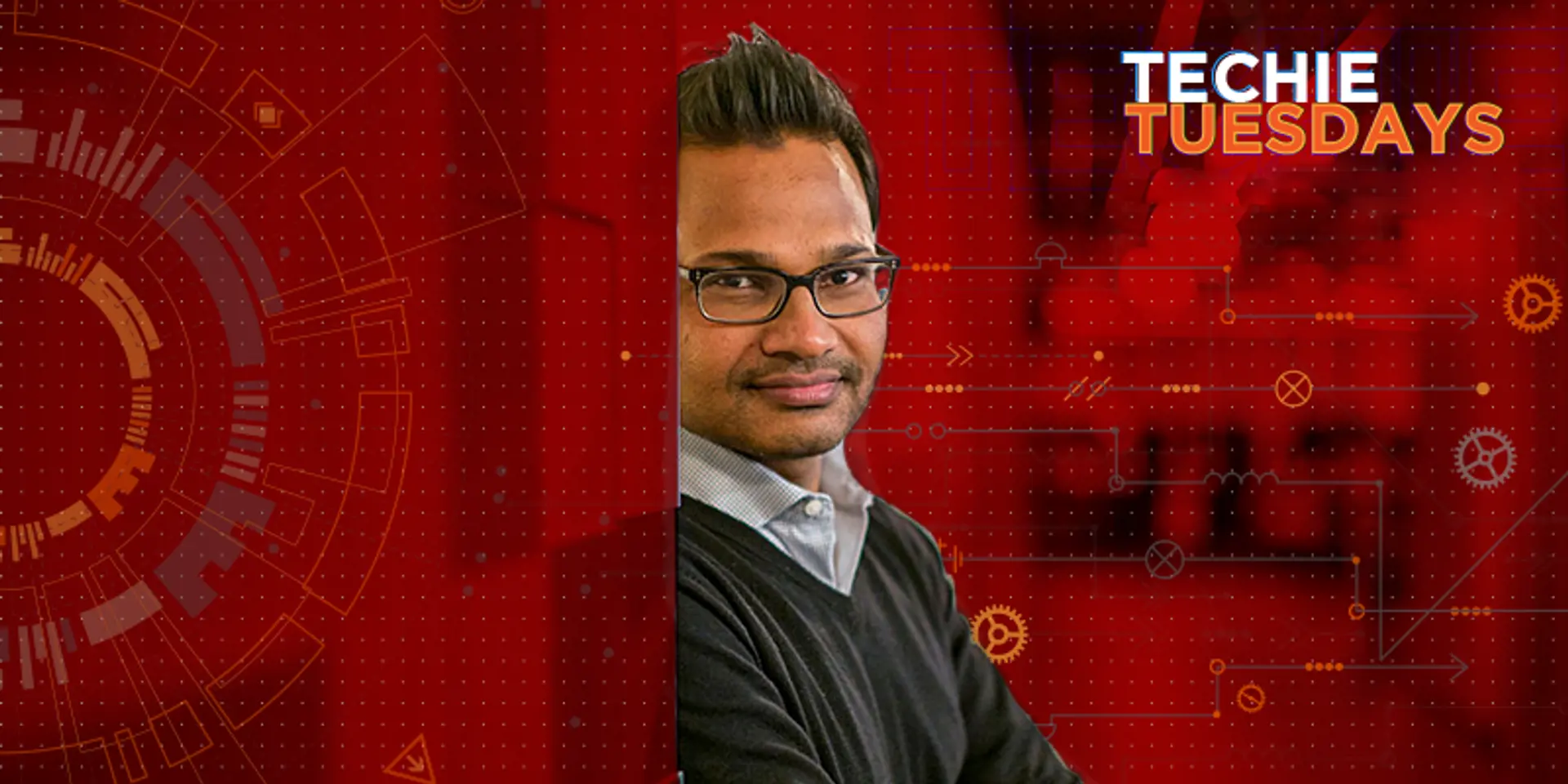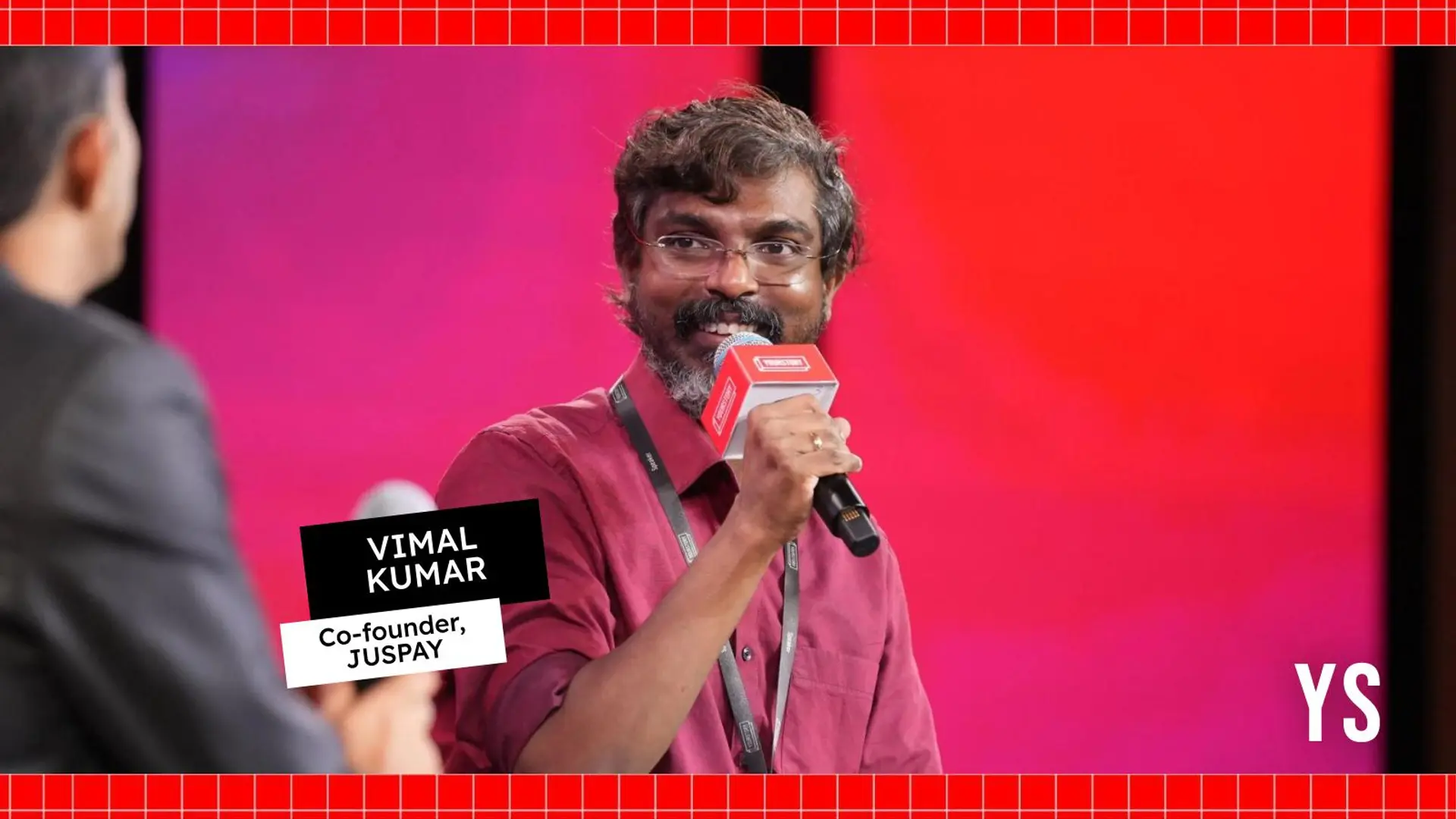The making of Jyoti Bansal - from a small town in Rajasthan to building a multibillion-dollar tech company
So, after a brief (well, not so brief after all) pause, we’re excited to be back with our beloved column, Techie Tuesdays. And we’re back with a bang! This week’s superstar is a humble Indian engineer whose hunger to learn and solve hard problems took him to Silicon Valley to build a company that was eventually acquired for a whopping $3.7 billion. This is the story of the man who created 400 millionaires with one deal. There’s so much to learn from Jyoti Bansal’s journey which, quite honestly, has just begun. Read on...
Jyoti Bansal’s story has inspired millions of aspiring entrepreneurs everywhere. During our interaction I realised how deeply ingrained humility as a trait is in Jyoti Bansal, and how it has helped him come this far along on his stupendous journey.
Jyoti is the founder and erstwhile CEO of AppDynamics, an applications and business performance monitoring software company that was acquired by Cisco in 2017 for $3.7 billion, a day before AppDynamics was due for an initial public offering. Currently, he is the CEO and founder of BIG Labs, a startup studio, CEO and co-founder of Harness, a continuous delivery startup, and co-founder of venture capital firm Unusual Ventures.

Here’s the story of a boy from small-town India who made it big in the world of technology and is now enabling many others to do bigger things.
Usual beginnings for the unusual techie

Jyoti was born and brought up in a small town in Rajasthan. His father ran a business of selling irrigation machinery. Jyoti didn’t have access to computers till Class IX and later he was taught only BASIC in school.
Jyoti’s family encouraged learning and saw the importance of a good education. “I was curious and some people may consider curiosity to be notorious. I liked to experiment with everything. I liked to read a lot. My grandfather had a small library with thousands of books and I read everything including The Republic by Plato. My father was not only supportive but a strong proponent of us getting the best education,” he recalls.
Helping his father with his business after school, Jyoti picked up several valuable business lessons. “It was interesting to see and learn the business aspect. I never went to an MBA, and this was the only exposure I had,” he says.
The self-learner at IIT Delhi
Jyoti was among the top 100 rank holders in JEE, and could have chosen any of the IITs, but he was keen on living in a big city and Delhi wasn’t too far from home.
Of the initial days at IIT, Jyoti says, “It is a shock when you are exposed to such diversity for the first time. For example, there was someone in my hostel who said that he had only seen English movies. The great thing about living in IIT was that it creates an equalising effect; everyone lives in more or less the same way doing more or less the same thing.”
The academic side of his IIT journey didn't excite Jyoti as much. He was more of a self-learner and he skipped many of his classes. He adds,
“I was very excited about startups and businesses even then and wanted to work in the industry rather than go for higher studies. My style is to read, learn fast and do things. I get impatient if I study something for a long time. Startups are fast paced and action oriented so it fits the bill.”
Jyoti managed the sales for Tryst, the annual technical festival of IIT Delhi. He ended up raising a total of Rs 9 lakh (almost 4-5 times of previous year's) in sponsorships, which resulted in the event being much bigger that year. Also, to make some extra money while in college, Jyoti joined FITJEE coaching centre where he evaluated copies of the students preparing for IITJEE.
While at IIT-Delhi, he learnt C and Java programming languages (which were just coming out). Java became his language of choice.

The strategic first job
Not surprisingly, Jyoti, who didn't much care for GPA, graduated with little more than five point something. Since GPA was the most important factor for campus selections, Jyoti didn't get the top jobs on campus. He instead decided to apply for jobs on his own and joined a startup called Applion Networks.
The company was building something like a set top system for TVs. Jyoti worked on the real time operating system (RTOS) written in VxWorks. “The code that would go into the RTOS was in C and there was management code on top of that which was the distribution system written in Java,” he explains, adding that he learnt much more programming in those six months than he did in four years of college.
Applion's head office was in New Jersey and he moved there after a few months. But Jyoti was fascinated by what was happening at Silicon Valley and wanted to go there instead. He then started applying for jobs.
Related read - The untold story of Alan Cooper, the father of Visual Basic
Silicon Valley – Chapter One
The first startup in Silicon Valley where Jyoti worked was founded by three PhDs from Stanford and MIT. He recalls, “It was a distributed computing platform, in some ways similar to what Hadoop and MapReduce are today. It was based on distributed tuple nets and the research going around that in those times (circa 2000). Sun had a similar product called JavaSpaces. I was working a lot on B-trees, which was used to organise different tasks, and was creating a search paradigm around it.
The tech stack was Java and by this time, Jyoti love for Java became more apparent.
Though it was a cool technology, the startup couldn't crack the sales. For Jyoti, the learning from this experience was that coding and building a technology that no one buys is not fun.
"The amount of efforts you're putting is no less than what you'll be putting for the product that is sold out in the market. It's frustrating. I decided I'm not going to work on a product that people aren't going to buy. It was sold to another startup, which was then sold to Microsoft and ended up being a part of (bing) search,” he adds.
Not done with his tryst with startups yet, Jyoti moved on to another company that was building data mining for manufacturing companies. The product was initially built in Microsoft technology stack and Jyoti was assigned the job of re-architecting that system into Java- based stack. The startup was doing well and raised capital as well, but started plateauing soon after the first product's success. The product couldn't evolve and the company was eventually sold to RockWell Automation.
Getting it right the third time – Wily Technology
Jyoti then moved on to Wily Technology, which was building the first generation of Java performance monitoring. At his previous job, Jyoti was the architect of a complex distributed system for data mining and knew that the performance and scalability of Java distributed system was a genuine problem to be solved. “Sometimes, the system would break; when there's a bottleneck, it'll be slow, there's some performance issue, something isn't working; I realised that there weren't many solutions that helped us figure out the root cause and that the product by Wily was very good,” he explains, of his decision to join the company.
Two years later, Wily Technology was acquired by CA Technologies for $375 million. Jyoti worked extensively on handling large data stores including building data query languages, and handling large volumes of data equivalent to distributed database. At that time, open source and big data weren’t available yet. At Wily, Jyoti was responsible for the architecture of a bunch of products and also got a chance to try product management for six months.
According to Jyoti, there are two components to building a great product:
- Engineering and building technology itself.
- Figuring out what the product should be.
He adds,
I learnt that the most important part of building a product is the user experience. My product philosophy of 'experience first' started to evolve around that time. As a backend engineer when you think of a product, you think of the engineering part first. I realised that it's the implementation detail of the experience you want to give to the user.
Genesis of AppDynamics
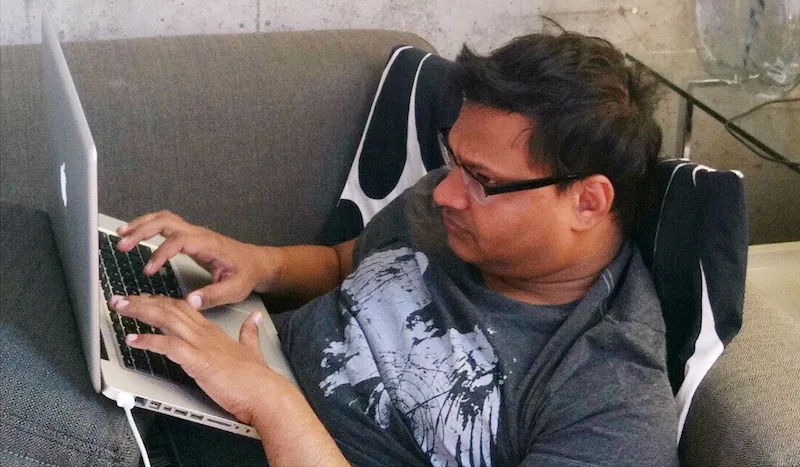
The pace of work at Wily allowed Jyoti the flexibility and bandwidth to work on his own idea. It became increasingly clear to him that while more and more software is being built, the applications are becoming more complex and distributed. Every click by a user touches upto 15-20 systems in the backend as systems are becoming more distributed into different services. Consequently, it was becoming very difficult to figure out if something went wrong. And, let’s face it: things go wrong all the time. As an engineer, Jyoti knew how hard it is to understand those systems. So he was convinced that someone has to build a solution for this.
“I knew that the world of software is moving towards smaller components that are faster moving. People are constantly taking larger code and breaking it into smaller pieces. It's increasing - from code running in two systems, to five systems to 20, and now in the case of micro-services and lambda function, it runs into thousands of systems,” Jyoti says
AppDynamics, Jyoti’s brainchild, came about as an attempt to understand and take control of such systems.
Backed by experience and exposure to the problem, coupled with his entrepreneurial dream and the shackles of immigration constraints finally done away with, Jyoti started coding. “The core innovation I wanted to bring in was 'distributed tracing'. When a user does a click and it goes to 20 different systems, can you trace that one click across all of those distributed systems? That kind of concept didn't exist. It became the core of AppDynamics,” he says.
The building blocks of AppDynamics
For a distributed system like this, there are a few parts -
- Instrument in core itself- For programming languages like Java that will run on a virtual machine. When you write your code it will get compiled on an intermediate code (bytecode in Java). At the time of execution, that bytecode is compiled into your machine code just in time. AppDynamics wrote an interceptor to modify the bytecode on the fly, right before the 'just in time' compilation to machine code. This gave them the ability to modify code in runtime. The product users just had to put Appdynamics on the production systems and it would intercept that compilation process and add some instrumentation to it.
- As the company was building distributed tracing, they also modified the application protocolsso that they can pass the information for a particular user click across many systems (and that will happen automatically and on the fly).
- Handling the data– One has to process the data and build a lot of intelligence and learning models and data analytics.
Everything was written in Java. AppDynamics was building deep inside the Java virtual machine, and not just any basic code.
You may also like - Will over skill -- story of Vivek Vaidya and his $700 M startup exit
How to keep low performance overhead
The hardest part in building a technology like AppDynamics is doing it with a low performance overhead. Jyoti and his team set their goal at two percent overhead. Anything more than that and it wouldn’t have worked out to be a solid business idea. A lot of creativity went into trying to extract this data at such a low overhead and this contributed to AppDynamics’ success.
“Hundreds of different tricks go into that. Normally, while programming in Java, you don't optimise for every machine instruction, but we had to do this to optimise every small piece of compute overhead that can come to the system,” Jyoti says.
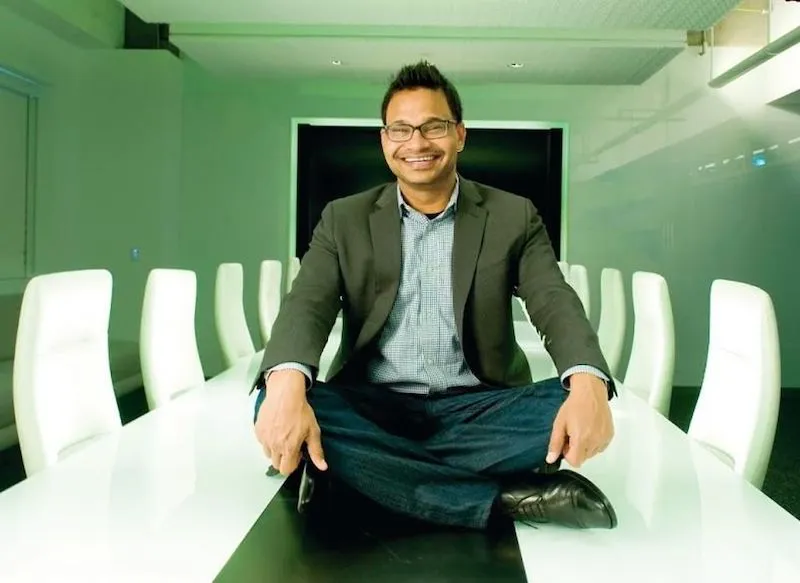
The right story to get investor’s interest
To scale his company, Jyoti needed venture capital. He started pitching to VCs on how the world of software is moving to cloud and distributed software and people would need a way to trace everything that's going on. However, soon after a few rounds of pitches and making the following observations, he figured out the best way to garner investor interest:
- In Silicon Valley, the venture model is more about looking for big hits. You invest in 10 companies and one of them becomes a unicorn and a couple of them become small hits, while the rest disappear. The way the investors see it, if everything goes right, can this company become a billion dollar company? It was clear to Jyoti that AppDynamics had to make that case
- People wanted external validation from market and customers but Jyoti did not even have a product at that time. He spoke to potential clients and got their feedback and started incorporating that into his pitch deck. This helped him to an extent to make up for the lack of a business case
- VCs want to know 'why you' i.e. if there's a genuine problem and a business opportunity, then why would you be the winner? What's your unique advantage - as a company, as a technology or as a founder? This was less of a problem for Jyoti as he was working on this field for some time then and he had a few patents to his name in this domain.
Once the pitch started to reflect the above points, it gained investor appeal and Jyoti got his first offer. “Interestingly, the way VCs work in Silicon Valley is that until one gets their first offer no one wants to jump in. But the moment you get it, then everyone wants to compete for the opportunity,” he explains.
Also read - How Shashikant Khandelwal is making Facebook ads relevant for over a billion people
And now, the right term-sheet
A VC questioned Jyoti why he hadn’t quit his job at Wily yet. This got Jyoti thinking, and he quit Wily the next day. He knew he had to take the risk and commit full time if he could ever convince an investor to risk their money on his idea. Two months later, he signed his first term sheet to raise Series A funding in early 2008.“It was scary. Till then most of my day was spent in meetings and pitching and in coding. But suddenly it was just me in a small office and five-and-a-half million dollars in the bank,” Jyoti says.
He brought on board Bhaskar Sunkara, his former colleague at Wily, as AppDynamics’ first CTO. “It was then the two of us trying to figure out what to do next. It took some time to build the team,” Jyoti recalls, of the initial days
Wrong assumptions and course correction
The hypothesis when Jyoti was starting out was that the people are moving to public cloud rather rapidly. If they are going to build distributed systems they'll go to public cloud quickly. So, AppDynamics worked on application running on AWS (Amazon Web Services). They also knew that if they want to monitor and trace this, it would be much easier and more powerful if they can also control the entire lifecycle of that software. People would come and deliver those software through them and then they'll monitor and trace that software. Based on that data, they can optimise how much capacity they need on cloud and other intelligent things.
However, both assumptions turned out to be wrong.
People weren't moving to cloud fast enough. Jyoti and his team were meeting four customers every week and realised that it's going to take long for them to move on to public cloud. So, they had to go back to the drawing board, as the company would have died if they went ahead on that assumption. Jyoti recalls that there were 3-4 more funded startups in that space, most of which didn't do correction and died. AppDynamics fixed the product so that even if people aren't on public cloud they have a product designed to address a similar set of problems for distributed systems running in their data centres
Moreover, the assumption of controlling the complete lifecycle of software delivery for better manageability was too ambitious. The market wasn't ready for it. What serverless technology is doing now is the core of what AppDynamics was initially doing in 2008.
Related read - Meet Kiran Bhat—the man who engineered Hulk and Tarkin to win 2017 sci-tech Oscar
Assumption #3 gone wrong too
The third assumption was based on the conventional Silicon Valley wisdom that if you're working on a new product, it has to be only software as a service (SaaS). This also turned out to be wrong. Jyoti remembers reaching out to the 'four horsemen of SaaS'--the collective term used for SaaS leaders Salesforce, Omniture, Concur and Taleo--then and the IT department of all four said they cannot use AppDynamics’ SaaS. He realised that people haven't distinguished between business application--sold to business for marketing department--and software infrastructure applications - monitoring, security, databases, messaging, which are sold to IT companies and developers.
He understood that people didn't realise that the adoption of SaaS for business applications wasn't the same for software infrastructure applications.
Jyoti says that AppDynamics was the only company that could offer its product as SaaS as well as on-premise for larger enterprises. Ten years later, the market of application monitoring and troubleshooting in large enterprises is still about 60 percent on-premise
Jyoti adds, “When we started, it was the recession time as well. I was paranoid. But I was clear that even if it takes long, I'll build the right product first before hiring the sales team."
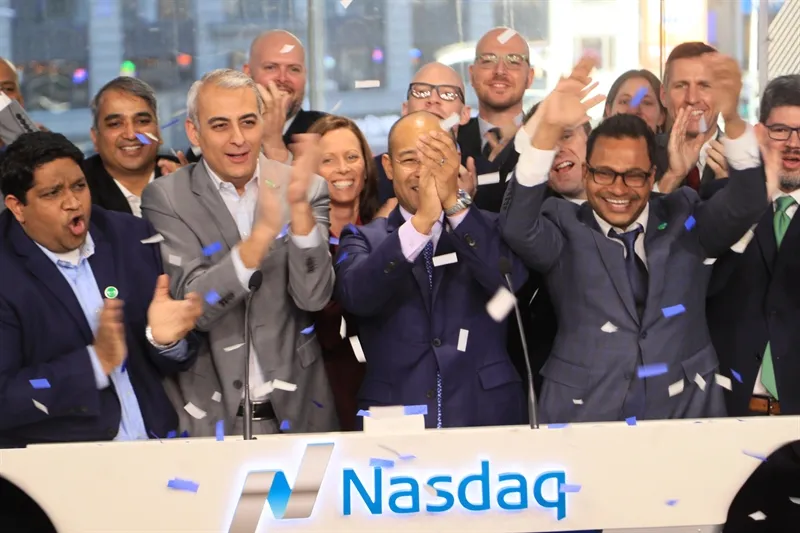
Building credibility
After the product launch, Jyoti realised that a lot of people didn't believe that AppDynamics could achieve so much with such a low overhead. So, they launched a free version of their product and made it easily downloadable and accessible to people.
“We took a small piece of core functionality, called it Appdynamics Lite, and launched it. Our goal was that people should be able to download it and put it into some Java application and start seeing the data, all within five minutes. This solved the problem of building the credibility and accelerated the adoption in the market,” Jyoti says, adding that in the process he also learnt a big lesson: making a free product is more difficult than making a paid product because with a free product you don't have someone to handhold the customer. If someone signs in, it should work and has to be easy.
Product evolution and adoption
People liked the product in Java but Java was only 60 percent of how people were building complex/distributed software systems. About 30 percent used dot net and the rest ran on other programming languages. Plenty of larger enterprises were building applications that were a mix of Java and dot net. For them to be effectively using AppDynamics’ distributed tracing, the company had to work on evolving its product from Java to dot net. Eventually, they built for every programming language.
AppDynamics’ first customer was voice recognition startup Yap (later acquired by Amazon). Then came along Netflix, Priceline and Electronic Arts, in that order. Jyoti says, “We were looking for customers who had more complex, forward-looking apps so that we could learn with them and if we design product for them, the rest of the world will soon follow suit,” Jyoti says.
Eighteen months after the launch, AppDynamics was clocking $5-6 million in revenues. Jyoti realised that in order to build it into a successful company, the focus should not just be on the product. They had to excel in sales execution as well. He believed that more competitive differentiators provide more ways to win in the long term.
At some point, AppDynamics also started to put focus on customer success and service. By 2014, the company stood at $70-80 million ARR.
Initially, AppDynamics was built for web apps and didn't have a product for mobile apps. It took the company almost a year to build out instrumentation for iOS and Android apps. Jyoti believes that if, today, people are running code on IoT devices, AppDynamics has to instrument and trace code on IoT devices; if it's on cloud, they have trace there; and if it's microservices, they go there as well. He says, “The world keep changing and if we don't keep ahead of it, we'll become outdated. As an entrepreneur, we're optimistic but paranoid as well, because we don't want to miss any trend.”
According to Jyoti, reinvention is key. “If someone is starting up today to go after the same problem and same space, what would they do differently? We would have to be doing the same thing. That's the only way we can keep reinventing ourselves.
You may also like - Richard Stallman – the freedom defender whom we may not deserve but definitely need
Setting up startups within a startup
Once they found product-market fit, the next phase was all about sales execution and organisational scaling. Can your organisation grow from 50 people to 400 people and not break apart? How do you bring in the right people, and build the right culture? A lot of it hinges on execution in a scalably repeatable manner in the field.
After reaching $40-50 million in revenues, AppDynamics entered the next phase where they had to expand to a broader platform. Jyoti knew that his growth won't sustain if he fails to expand from product to a platform. This is a big challenge, as it's not easy to build adjacent products because the company's DNA gets created around the initial product. Today, after acquisition, AppDynamics is clocking more than $400 million annual revenues. Jyoti believes that what really worked was the setting up of startups within a startup. “For each of the new product we wanted to build, we created a new startup. I knew we did really well building products as a startup. We structured startups inside AppDynamics to enter the next phase,” he explains.
When profits become more important than growth
AppDynamics was established as a leader in the market, clocking more than $100 million in revenues, and had scaled heights most people can only dream of. Now the company needed to be operated like a large enterprise and that included going public, among other steps. Normally, while profits are important for a fast growing company it does not take precedence over growth. That focus starts to change a bit at the stage when a company is looking to go public; operational efficiency at a larger scale then becomes important.
“As a CEO of the company, you've to evolve yourself during these phases of the company. I started as an engineer. My passion is engineering and building products and that will never go. But I'm very passionate about building businesses and companies, leading people - eventually, technology businesses are about people - bringing, retaining and leading them. You go from product, to go-to market, to people scaling to operational efficiencies. There's no one formula that fits every different stage of a company. The company has to evolve, the entrepreneur has to evolve,” Jyoti says.
Entrepreneurship holds a fond place in Jyoti’s heart as he believes there is learning at every curve. “Every stage is like a video game. When you're playing level one, it takes you some time to figure it out. Then you go to level two and realise that level one was easy. Then you figure out level two and move on to level three, and so on.”

The deal that created 400 millionaires
Selling AppDynamics to Cisco was not an easy decision for Jyoti, as the company was very close to going public. However, he believes that it was the right thing to do for everyone - stakeholders and shareholders.
“When you're running a company as founder, you bring a lot of people on board. It's not just you who put your blood, sweat and tears; so many of your employees do so as well. People who work at startups work as hard as the founders of startups,” Jyoti adds.
All the employees at AppDynamics were shareholders, so employee interest was paramount while making the decision to sell. Jyoti takes pride in the fact that more than 400 AppDynamics employees made more than a million dollarsafter the Cisco acquisition.
‘Look for people who have bias for action
While putting together an engineering team, Jyoti advises founders to look for people who are passionate about building things. He looked for people who enjoy the art of building a good software/UI.
“I always look for people who hold bias for action, who are fast moving and will act. I'll rather have people who can build, ship and iterate products faster than someone who's just studying it,” he adds.
According to Jyoti, attracting the best people cannot be done just with money. Beyond compensation, founders have to keep in mind the following factors while hiring engineers: :
- Candidates have to believe in the mission and vision of the company.
- People they will work with. Great engineers will never join you if they don't think that they will be working with other great engineers. At an interview, you as the hirer is not the only one interviewing. The engineer also interviews you, judges you by measure of the engineers you already have. The only way you can get them on board is if they viewed their interviewers as smart engineers.
- The environment and impact they could have. Great technologists want to work in a place where they can make an impact and make a difference. It's easy for a startup but it becomes increasingly important to maintain that culture consciously as a company grows.
- How challenging the problem is.Good engineers get excited about solving hard problems.According to Jyoti, there are two kinds of engineers: the ones that get frightened when they see a hard problem and the ones who get visibly excited when encountering one.
Also read - How a small-town commerce graduate became CTO of a multibillion-dollar company
Qualities of a good CEO
Though a techie, Jyoti was a successful CEO of multi-billion-dollar company. According to him, a good CEO is defined by how he/she:
- Creates a vision- The CEO owns the vision of the company. Companies that don't have a clear vision and identity of who they are and where they are going start to struggle eventually.
- Aligns everyonetowards your vision and goals, aligning your product strategy, go-to market strategy, funding, and financing strategy towards where things are going. Most times, this alignment isn't present in the organisations. It has to broadly add up to where the company has to go.
- Is execution oriented- Eventually, as the CEO you own the results and if you don't set the tone for getting those results, the rest of the organisation would not get there.
Decision making
While Jyoti is a rational person, his instincts guide his decisions too at times. He is also a big believer in asking people, be it engineers or his peers and mentors, for advice and feedback. He adds, “If I cannot have a convincing discussion about a decision with 10 smart people around, that means my decision is probably not right.”
He also believes that one cannot get all decisions right. Some decision are very impactful and you want to get most of them right. But there are a lot of decisions where the impact may not be as high, and you should refrain from overanalysing those.
While a CEO should aim to get most of his/her decisions right, they also have to have the adaptability of fixing a wrong decision.
You may also like - Ajay Shah — the 'bit player' in the Indian financial reforms
Values of AppDynamics
The culture of the company usually stems from the values the founders bring to the table. Jyoti has defined a very strong culture of customer centricity that goes hand in hand with the culture of solving a problem.
- Culture of constant disruption- If we aren't constantly disrupting ourselves and if we get complacent, someone else will disrupt us. You really have no choice - either you get disrupted from inside or you get disrupted from outside, so why not do it from the inside?
- Culture of intellectual honesty - It has to be data driven. Just because you're a boss, it doesn't mean that your point will be taken without an intellectually honest debate around it.
- Culture of inclusion - You cannot create something of value on your own. You need to bring people, excite them and work with them.
- Culture of getting things done - There are so many things people talk about, but they don't get to doing things. It's important to get things done.
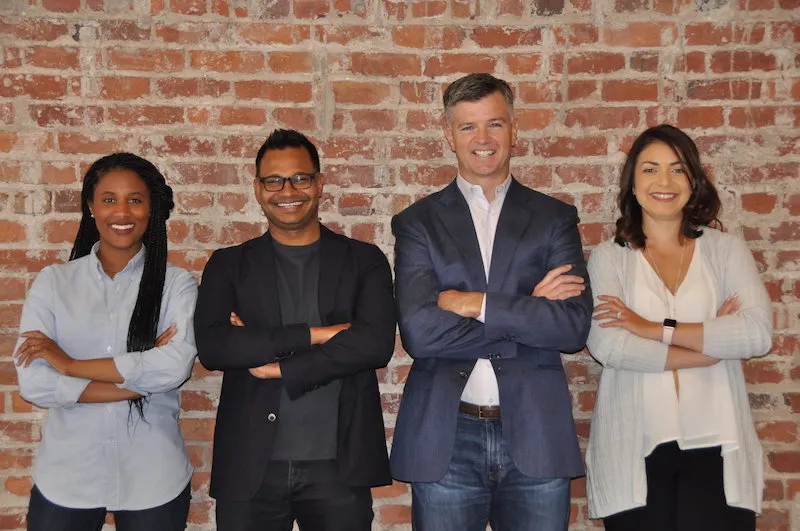
Chasing big dreams with BIG Labs
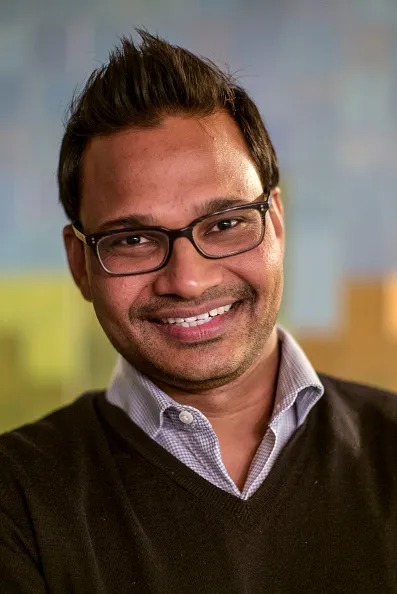
Since AppDynamics had a good team in place, Jyoti didn't have to join Cisco on an active operational role. This freed up his time to explore other things. While he likes to invest in some good companies, he doesn't prefer being just a passive investor. And he’s definitely not ready to retire. He likes to solve problems, build good products and good businesses around it. So, he started BIG Labs - a startup studio. The idea is to experiment with multiple problem areas and attempt to build great products and great companies around it.
Jyoti says it is a different concept and doesn't subscribe to the traditional VC fund, incubator/accelerator model. But according to him, that is best suited for what he’s looking to achieve.
At BIG Labs, Jyoti and his team are experimenting, having identified multiple problems. And now to check if their thesis is right, they've to build a prototype, and chase it with an initial product, bring it to the market, and do a lot of validation. There is risk involved, but that is the name of the game.
There's a virtual team that is brought in place depending on the type of problem. Jyoti is partial to problems related to software infrastructure given his background and past associations.
BIG Labs only spins out firms that it is very excited about -- for example, Harness,io, their first company, works to solve the pain around software delivery (not too different from AppDynamics)
Earlier this year, Jyoti along with John Vrionis, a former venture partner at Lightspeed, launched Unusual Ventures, a $160-million seed fund. Vrionis will take board seats and handle the day-to-day activities of the fund while Bansal will focus on mentoring the startups.
The next decade or two
Jyoti says he is having a lot of fun, doing what he is doing. He takes great pride in helping companies build good products. Financial goals are not the priority for him. If he’s involved in building a great product and a great business around it, he finds the journey fulfilling and exciting.
A big believer in equality, Jyoti is now exploring ways to provide equal opportunities to people, irrespective of where they were born or what privileges they come with. “Everyone has equal natural skills in some ways but where you are born (family, country, town) could have an impact on what opportunities you get in life. To me that's where equality has to be brought.”
You can follow Jyoti on Twitter or connect with him on LinkedIn.
Trivia: When HBO Go, a new internet subscription television service, began experiencing problems on highly anticipated premiere dates, HBO hired Bansal's company to monitor their systems as of May 2015. In August 2015, CNBC credited Bansal for having "saved Game of Thrones”.


